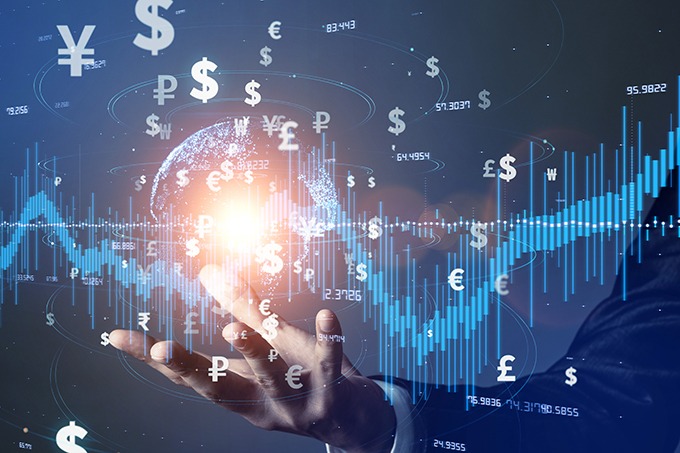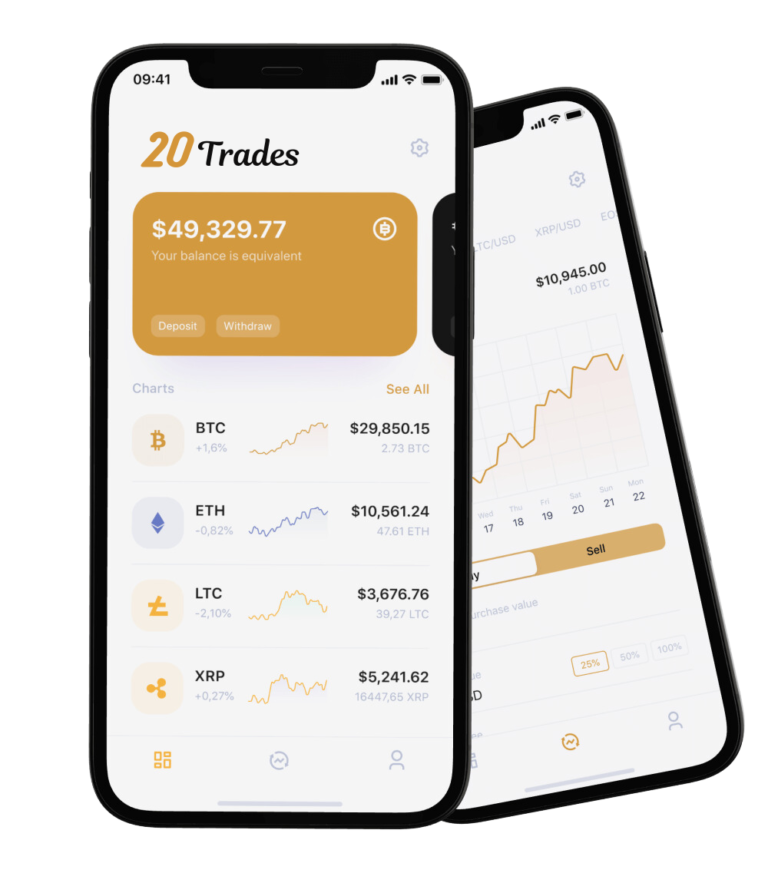How do currency markets work?
Unlike shares or commodities, forex trading does not take place on exchanges but directly between two parties, in an over-the-counter (OTC) market. The forex market is run by a global network of banks, spread across four major forex trading centres in different time zones: London, New York, Sydney and Tokyo. Because there is no central location, you can trade forex 24 hours a day.
There are three different types of forex market:
Spot forex market: the physical exchange of a currency pair, which takes place at the exact point the trade is settled – ie ‘on the spot’ – or within a short period of time
Forward forex market: a contract is agreed to buy or sell a set amount of a currency at a specified price, to be settled at a set date in the future or within a range of future dates
Future forex market: a contract is agreed to buy or sell a set amount of a given currency at a set price and date in the future. Unlike forwards, a futures contract is legally binding
Most traders speculating on forex prices will not plan to take delivery of the currency itself; instead they make exchange rate predictions to take advantage of price movements in the market.
What is a base and quote currency?
A base currency is the first currency listed in a forex pair, while the second currency is called the quote currency. Forex trading always involves selling one currency in order to buy another, which is why it is quoted in pairs – the price of a forex pair is how much one unit of the base currency is worth in the quote currency.
Each currency in the pair is listed as a three-letter code, which tends to be formed of two letters that stand for the region, and one standing for the currency itself. For example, GBP/USD is a currency pair that involves buying the Great British pound and selling the US dollar.
So in the example below, GBP is the base currency and USD is the quote currency. If GBP/USD is trading at 1.35361, then one pound is worth 1.35361 dollars.
If the pound rises against the dollar, then a single pound will be worth more dollars and the pair’s price will increase. If it drops, the pair’s price will decrease. So if you think that the base currency in a pair is likely to strengthen against the quote currency, you can buy the pair (going long). If you think it will weaken, you can sell the pair (going short).

To keep things ordered, most providers split pairs into the following categories:
Major pairs. Seven currencies that make up 80% of global forex trading. Includes EUR/USD, USD/JPY, GBP/USD, USD/CHF, USD/CAD and AUD/USD
Minor pairs. Less frequently traded, these often feature major currencies against each other instead of the US dollar. Includes: EUR/GBP, EUR/CHF, GBP/JPY
Exotics. A major currency against one from a small or emerging economy. Includes: USD/PLN (US dollar vs Polish zloty) , GBP/MXN (Sterling vs Mexican peso), EUR/CZK
Regional pairs. Pairs classified by region – such as Scandinavia or Australasia. Includes: EUR/NOK (Euro vs Norwegian krona), AUD/NZD (Australian dollar vs New Zealand dollar), AUD/SGD
What moves the forex market?
The forex market is made up of currencies from all over the world, which can make exchange rate predictions difficult as there are many factors that could contribute to price movements. However, like most financial markets, forex is primarily driven by the forces of supply and demand, and it is important to gain an understanding of the influences that drives price fluctuations here.
Central banks
Supply is controlled by central banks, who can announce measures that will have a significant effect on their currency’s price. Quantitative easing, for instance, involves injecting more money into an economy, and can cause its currency’s price to drop.
News reports
Commercial banks and other investors tend to want to put their capital into economies that have a strong outlook. So, if a positive piece of news hits the markets about a certain region, it will encourage investment and increase demand for that region’s currency.
Unless there is a parallel increase in supply for the currency, the disparity between supply and demand will cause its price to increase. Similarly, a piece of negative news can cause investment to decrease and lower a currency’s price. This is why currencies tend to reflect the reported economic health of the region they represent.
Market sentiment
Market sentiment, which is often in reaction to the news, can also play a major role in driving currency prices. If traders believe that a currency is headed in a certain direction, they will trade accordingly and may convince others to follow suit, increasing or decreasing demand.
Economic data
Economic data is integral to the price movements of currencies for two reasons – it gives an indication of how an economy is performing, and it offers insight into what its central bank might do next.
Say, for example, that inflation in the eurozone has risen above the 2% level that the European Central Bank (ECB) aims to maintain. The ECB’s main policy tool to combat rising inflation is increasing European interest rates – so traders might start buying the euro in anticipation of rates going up. With more traders wanting euros, EUR/USD could see a rise in price.
Credit ratings
Investors will try to maximize the return they can get from a market, while minimizing their risk. So alongside interest rates and economic data, they might also look at credit ratings when deciding where to invest.
A country’s credit rating is an independent assessment of its likelihood of repaying its debts. A country with a high credit rating is seen as a safer area for investment than one with a low credit rating. This often comes into particular focus when credit ratings are upgraded and downgraded. A country with an upgraded credit rating can see its currency increase in price, and vice versa.
How does forex trading work?
There are a variety of different ways that you can trade forex, but they all work the same way: by simultaneously buying one currency while selling another. Traditionally, a lot of forex transactions have been made via a forex broker, but with the rise of online trading you can take advantage of forex price movements using derivatives like CFD trading.
CFDs are leveraged products, which enable you to open a position for a just a fraction of the full value of the trade. Unlike non-leveraged products, you don’t take ownership of the asset, but take a position on whether you think the market will rise or fall in value. Although leveraged products can magnify your profits, they can also magnify losses if the market moves against you.
What is the spread in forex trading?
The spread is the difference between the buy and sell prices quoted for a forex pair. Like many financial markets, when you open a forex position you’ll be presented with two prices. If you want to open a long position, you trade at the buy price, which is slightly above the market price. If you want to open a short position, you trade at the sell price – slightly below the market price.

What is a lot in forex?
Currencies are traded in lots – batches of currency used to standardise forex trades. As forex tends to move in small amounts, lots tend to be very large: a standard lot is 100,000 units of the base currency. So, because individual traders won’t necessarily have 100,000 pounds (or whichever currency they’re trading) to place on every trade, almost all forex trading is leveraged.
What is leverage in forex?
Leverage is the means of gaining exposure to large amounts of currency without having to pay the full value of your trade upfront. Instead, you put down a small deposit, known as margin. When you close a leveraged position, your profit or loss is based on the full size of the trade.
While that does magnify your profits, it also brings the risk of amplified losses – including losses that can exceed your margin . Leveraged trading therefore makes it extremely important to learn how to manage your risk.

What is margin in forex?
Margin is a key part of leveraged trading. It is the term used to describe the initial deposit you put up to open and maintain a leveraged position. When you are trading forex with margin, remember that your margin requirement will change depending on your broker, and how large your trade size is.
Margin is usually expressed as a percentage of the full position. So, a trade on EUR/GBP, for instance, might only require 1% of the total value of the position to be paid in order for it to be opened. So instead of depositing AUD$100,000, you’d only need to deposit AUD$1000.
What is a pip in forex?
Pips are the units used to measure movement in a forex pair. A forex pip is usually equivalent to a one-digit movement in the fourth decimal place of a currency pair. So, if GBP/USD moves from $1.35361 to $1.35371, then it has moved a single pip. The decimal places shown after the pip are called fractional pips, or sometimes pipettes.

The exception to this rule is when the quote currency is listed in much smaller denominations, with the most notable example being the Japanese yen. Here, a movement in the second decimal place constitutes a single pip. So, if EUR/JPY moves from ¥106.452 to ¥106.462, again it has moved a single pip.




